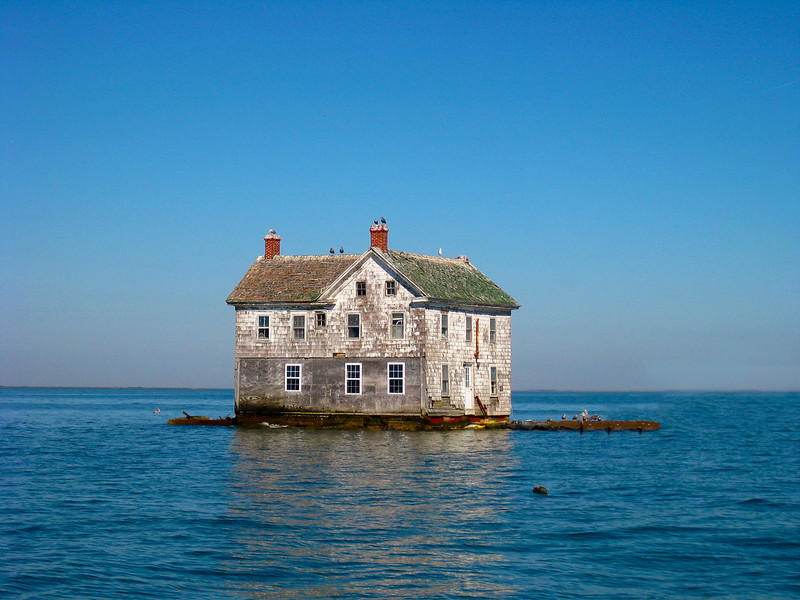Washing Away - The disappearing islands of Chesapeake Bay
Imagine, if you will, sailing along the eastern Chesapeake, searching for your next port when a solitary wooden house appears before you. It is covered in cormorants with waves splashing into the windows. Odd, you think, what is that doing out here and who would live in a place like that?
No need to imagine it.
I've been there, many times.
 |
Photo by Forgemind ArchiMedia, Flickr A single house was all that remained
of Holland Island in Chesapeake Bay. The house burned in 2010, and its remains
are now submerged. |
A quick check of the chart that day in the early aughts revealed nothing there but a tiny spit of land; no more than an oyster reef in the middle of the bay. We could only speculate about the purpose of the ghost structure — perhaps it was an abandoned lighthouse or a fish camp.
I was shocked to learn later that we had been looking at the last remnant of Holland Island, once a large community of farmers and fishermen who lived on the island until it eroded away to the point where it was abandoned in 1922. The buildings there had either been removed or washed away — with the exception of this last wraith.
The fact that the house remained was due to the heroic efforts of Stephen White, a retired Methodist minister who purchased the disintegrating island in 1995 and spent thousands on sunken barges and levees in a vain attempt to save the place he had loved as a boy. But his efforts only delayed the inevitable: In 2010 he capitulated by putting a match to the house and sailed away. Today all that remains of the town, the church, and the cemetery is a shallow spot on Google Earth.
I saw him working there once.
The day we first sailed by that house the term “global climate change” was unknown to me. We carried on down the East Coast to our new home in Florida, and didn’t return to the bay until summer 2017 — again in a boat.
Contrary to the article, Holland Island is still alive and well, and above water; at least it was the last time I went by it this fall, as a quick check Google Maps will confirm:
Indeed, the end of the island where the house stood is gone, and the land has retreated to the south, where the largest part of the island remains. If you zoom in on the body of the island you can still see the remains of the old town. This is the site of one of Chesapeake Bays few Great Blue Heron. If you look north, a remnant of the island looks like a sand bar (which it basically is), usually covered with Brown Pelicans and gulls. A bit further north, and you can find the outline of the missing house, along with the sunken barge next to it, and the excavator in the water. This is a well known premier fishing spot.
While Holland Island is shrinking, I hate articles like this that lie about it, saying it's gone when it isn't (yet). Yes, it's going, and will go eventually, probably in my lifetime, but it's not caused by "anthropogenic sea level rise"
No acceleration of the slow rise in sea level we are still experiencing from the end of the last glacial advance.































